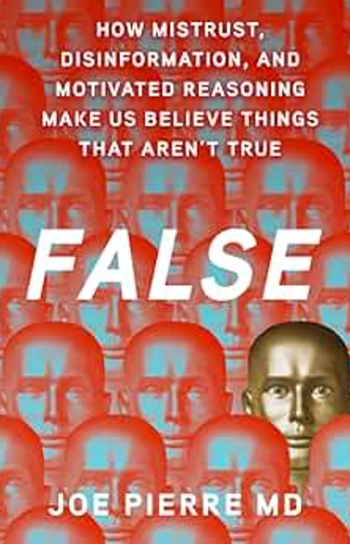
- Psychiatric Times Vol 27 No 5
- Volume 27
- Issue 5
The White Ribbon
The White Ribbon is an instant classic of European cinema. Filmed in black and white and set in a rural village in northern Germany circa 1912, it may remind you of early Bergman, Buñuel, and other great European filmmakers of the black-and-white era, but it is an homage to none of them.
Haneke tells us that he thought about the screenplay for 20 years. The starting point of his film was the idea of a “church choir in Protestant northern Germany before the first world war.” The children in the choir, who “had internalized the moral imperatives that they’d been taught by their parents, then judged their parents according to the moral imperatives that they preached.” Along the way, another idea seems to have worked its way into Haneke’s conception-namely, that these children would grow up to be the first generation of Germans to become Nazis. Life in the bleak German village that Haneke has created is beset by inexplicable acts of malevolence.
Haneke has a reputation in Europe for “cerebral horror films” but he is best known to Americans for The Piano Teacher and Cach (or Hidden). The former was a psychological study of a sadomasochistic woman whose perverse activities may have shocked moviegoers but were a field day for the theoretical speculations of Lacanian psychoanalysts. What we saw on the screen was real and surreal at the same time. It was an unflinching performance by Isabelle Huppert as an instructor at the Vienna conservatory who comes to a career impasse and is driven in despair to act out her sexual fantasies. That conjunction of despair and perversion opened a window into the human condition.
Haneke’s other box office success in the States was Cach. Set in Paris and starring Daniel Auteuil and Juliette Binoche, the film followed the conventions and had the impact of a psychological thriller. The French couple, identifiably of the haute bourgeoisie, discover that they are under surveillance. The paranoid tension mounts. Every event seems to have sinister significance. The couple’s relationship cracks under the pressure. But then, instead of resolution in which the malefactor is identified and the strands of the mystery come together and make sense, Haneke leaves everything up in the air. In fact, the harder one struggles to find the “hidden” solution, the more obvious it becomes that there is none. You realize that Haneke intends to create your bafflement. Cach is not a postmodern version of narrative that even if nonlinear can be sorted out and understood as a deeper version of storytelling. Haneke has played a bait and switch game on his audience. They thought they were getting a mystery but instead he gave them mystification. If some moviegoers were frustrated, most of the serious critics liked it.
Michael Haneke is a fiercely uncompromising artist. Cach was not an act of caprice. As a longtime student of psychology and philosophy, he had mounted an attack on the very structure of storytelling and on our settled expectations of how human experience is ordered by narrative. He sees the world through the lens of psychology but with the doubts of a philosopher.
Whatever the merits of the mysterious Cach, it was a useful preparation for The White Ribbon. One can infer from what Haneke tells us that he distrusts all historical accounts and particularly those in historical films. Haneke maintains that only politicians have answers. He seems to mean this in its deepest sense so that for him, the ordering of historical events in a conventional narrative structure is inevitably a form of propaganda. His belief is that films should not claim “to depict or represent a reality that none of us can know.” He sees film as an artifact rather than a reliable construction. The White Ribbon then is his creative artifact, a history without historicity.
It recounts the mystery of the malevolent events in the village, raises questions, but gives few answers. The film is told by a narrator, the schoolteacher, an outsider who comes from a nearby village. He has grown old and he concedes at the outset that his memory may be failing and that he knows many of the events that he recounts only by hearsay. He is the antithesis of the omniscient narrator, but he believes that if one understands what happened in the village, one may discover in that microcosm what happened later in “our country.” The schoolteacher, we will eventually learn, thinks that his schoolchildren were responsible for the malevolent events and that they were led by a daughter and a son of the Protestant minister.
As in Cach, each segment of The White Ribbon is a piece of conventional storytelling. They are like beads of narrative strung together by Haneke’s artistry and not by the logic of storytelling. There is a sense of chronology but, as you follow it, you find yourself in a maze that might have been designed by M. C. Escher, the artist famous for his drawings of impossible realities. Haneke’s segments introduce us to the main characters in the village. They are the Doctor, the Midwife, the Steward, the Baron-whose estate dominates the village-the Minister, the Schoolteacher, and one of the peasant workers singled out by the accidental death of his wife, and their families. The village is agrarian, a place where feudalism, Lutheranism, male chauvinism, and the rhythm of the seasons still structure the lives of the impoverished citizenry.
The film begins with the malevolent event that starts the sinister cycle. Someone has stretched a wire between the trees at the entrance to the doctor’s yard that will cruelly throw the unsuspecting doctor and horse to the ground, injuring them both. Who did it and why, we are never told. Certainly, by the end of the film, we might believe that the doctor deserved it, a kind healer but an odious man who molests his 14-year-old daughter and has used and sexually abused the midwife, daring her to commit suicide when he rejects her. In this village, all of the women are subjugated.
Many of the events Haneke shows us are universals in the lives of children but presented in their cruelest and most bitter version. The steward’s son (perhaps a 12-year-old), in a large and growing family, resents the fact that his mother has given birth to yet another boy. What happens unexpectedly is that the son (we are led to suspect) leaves the baby’s window open in the dead of winter-an understandable but unforgivable attempt to get rid of his hated rival. This son of the steward and an older brother are so envious of the baron’s young son, Sigi, that they throw him in the pond and steal his whistle. The enraged steward will brutally thrash his son, demanding that he hand over the whistle. The boy obstinately denies his guilt and then, as the father descends the stairs still in his rage, we hear the unmistakable shrill of the whistle come from the boy’s room-confession or defiance: perhaps both. The steward’s fealty to the baron is abject; his livelihood depends on it, and so his son’s assault on the baron’s spoiled and beloved little Sigi has deeper psychological and even political meaning.
Nothing is more alienating to a son than a tyrannical father kowtowing in fear and deference to his superiors-it is the ultimate demonstration of the hypocrisy of pater potestas (paternal power) and the legitimacy of political authority. Within the family dynamics, we sense the political rebellion. This theme of rebellion is more directly echoed in the life of the tragic peasant, whose wife falls through the floor of the baron’s rickety barn and is killed. The peasant’s oldest son blames the baron and gets his revenge by destroying the landowner’s cabbage patch. This peasant father is, however, more realist than kowtower. He explains that their family cannot survive without the baron’s largesse. And, as if to prove his point, he hangs himself, leaving the burden of the family’s survival on his rebellious and vengeful progeny.
Two of the most unforgettable moments in the film involve the doctor’s 5-year-old son, whose mother died giving birth to him. Haneke shows the boy’s motherly 14-year-old sister trying to explain to him what death is. He is too young to comprehend fully but, apparently, too old to accept false reassurances. His absent mother is not away on a trip, as he has been told. She is dead, and he learns that in a long time he, too, must die. As if to defy what he has been told, he sweeps his supper dishes to the floor. And that same boy is later shown wandering through a darkened house, looking for that older sister to whom he is attached and whose absence from her bed at night has alarmed him. He will discover her being sexually abused by their father. Can the boy possibly understand what he beholds? His quick-witted reassuring sister conjures up a deception about what was happening-their father was piercing her earlobes. And the doctor, as he buttons his fly, ambiguously echoes her deception. “Beauty must suffer.” We, of course, are meant to understand what the boy does not, in his encounters with death and incestuous sex-his loss of innocence.
Haneke’s film has oneiric power. It will inhabit your mind as though it were your own nightmare. The most appalling moments take place between the Protestant minister and his 2 oldest children, as he burdens them with shame and guilt. The son is told that because of his masturbation, he will rot and die here on earth, and presumably be damned in the hereafter. His hands are tied to the sides of the bed every night, not just as punishment, but for his own good. The oldest daughter, unfairly chastised and humiliated by her father in front of her classmates, escapes his sanctimonious torments only by fainting. She will exact revenge, killing her father’s pet bird, by crucifying it on a pair of scissors. This is more than judging her father by the moral imperatives he has preached. In her revenge, there is something that goes beyond moral imperatives and partakes of the diabolical. It is not just that she punishes her father. It is a show of unwavering cruelty to an innocent and vulnerable creature. The pastor’s youngest son, still in his innocence, takes pity on his father and offers him his own pet bird as a replacement. This is one of the few moments of light. It serves to emphasize the growing shadows of evil that darken the landscape of the village.
Other malevolent acts, done presumably by the older children, led by the minister’s son and daughter, are almost satanic; they involve the kidnapping and torture of little Sigi and of the midwife’s mentally disabled child: the most and the least advantaged children of the village, both equally innocent and vulnerable. When the beaten, and perhaps blinded, child of the midwife is discovered, there is a note attached about God “visiting the iniquity of the father upon the sons to the third and fourth generation.” Are children capable of that? Their schoolteacher, himself an innocent man, believes that they are.
When he shares his suspicions with the Lutheran minister-the man who judges good and evil in the name of God-the minister threatens to have the teacher sent to prison if he ever repeats these insane allegations. It will be decades later when the schoolteacher finally does repeat his allegations, in the account that he gives in The White Ribbon.
The title
Haneke tells us that it would be wrong if people “saw my film as a diatribe against religion.” Like many moralizers who came before him, Haneke is for Christ, but against the Church. His White Ribbon is not just a film; it is an ambitious work of art. Like all great art, it finds the universal in the particular.
Articles in this issue
over 15 years ago
Get the Bigger Therapeutic Pictureover 15 years ago
Ethical Aspects of Self-Disclosure in Psychotherapyover 15 years ago
Introduction: Ethical Dilemmas Old and Newover 15 years ago
Undue Pharmaceutical Influence on Psychiatric Practiceover 15 years ago
A Psychiatrist’s Guitar Poemover 15 years ago
DSM5 and the Medicalization of Grief: Two Perspectivesover 15 years ago
Extraordinarily Ordinaryover 15 years ago
The Political Diagnosis: Psychiatry in the Service of the Lawover 15 years ago
The Fort Hood Aftermath-Army Accountability Review and PsychiatristsNewsletter
Receive trusted psychiatric news, expert analysis, and clinical insights — subscribe today to support your practice and your patients.

















